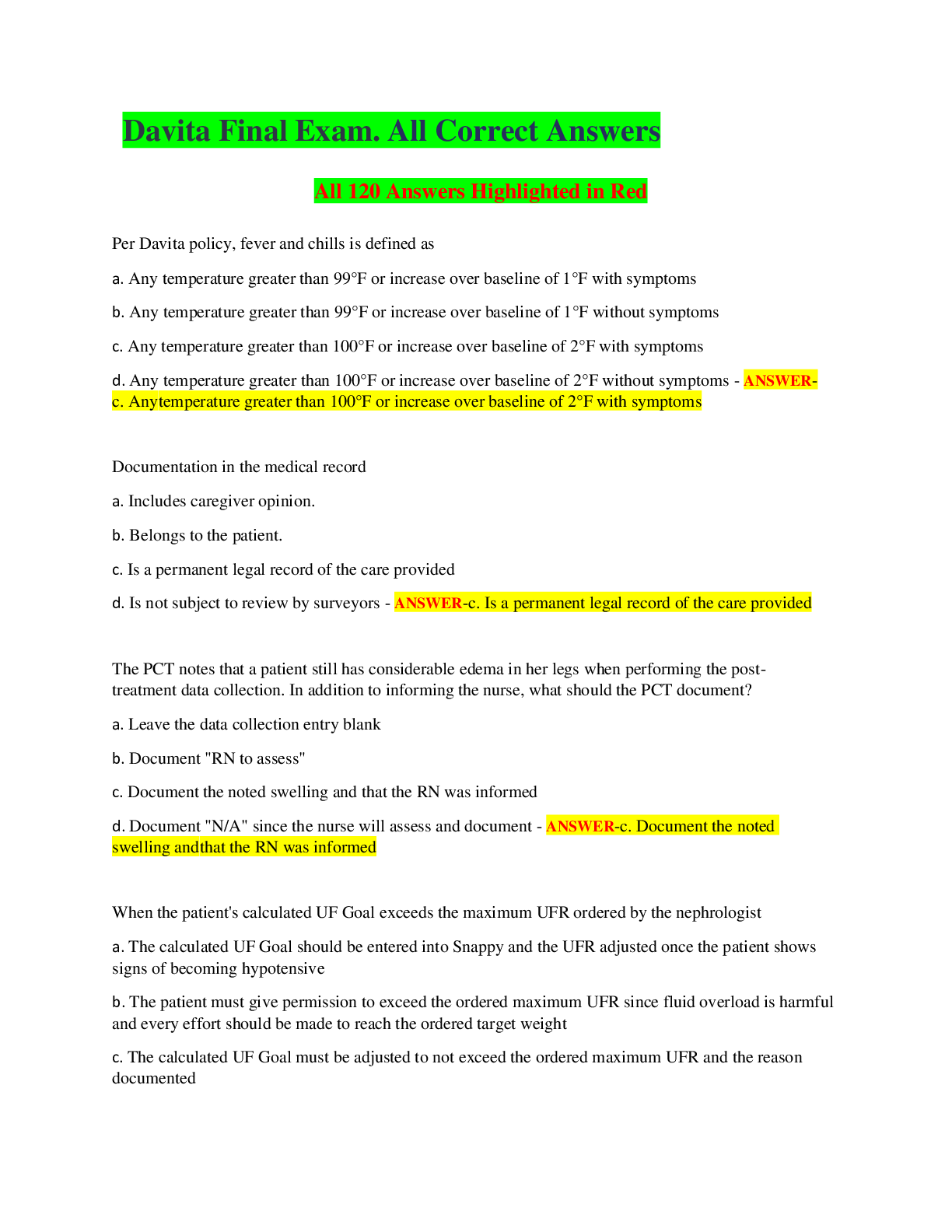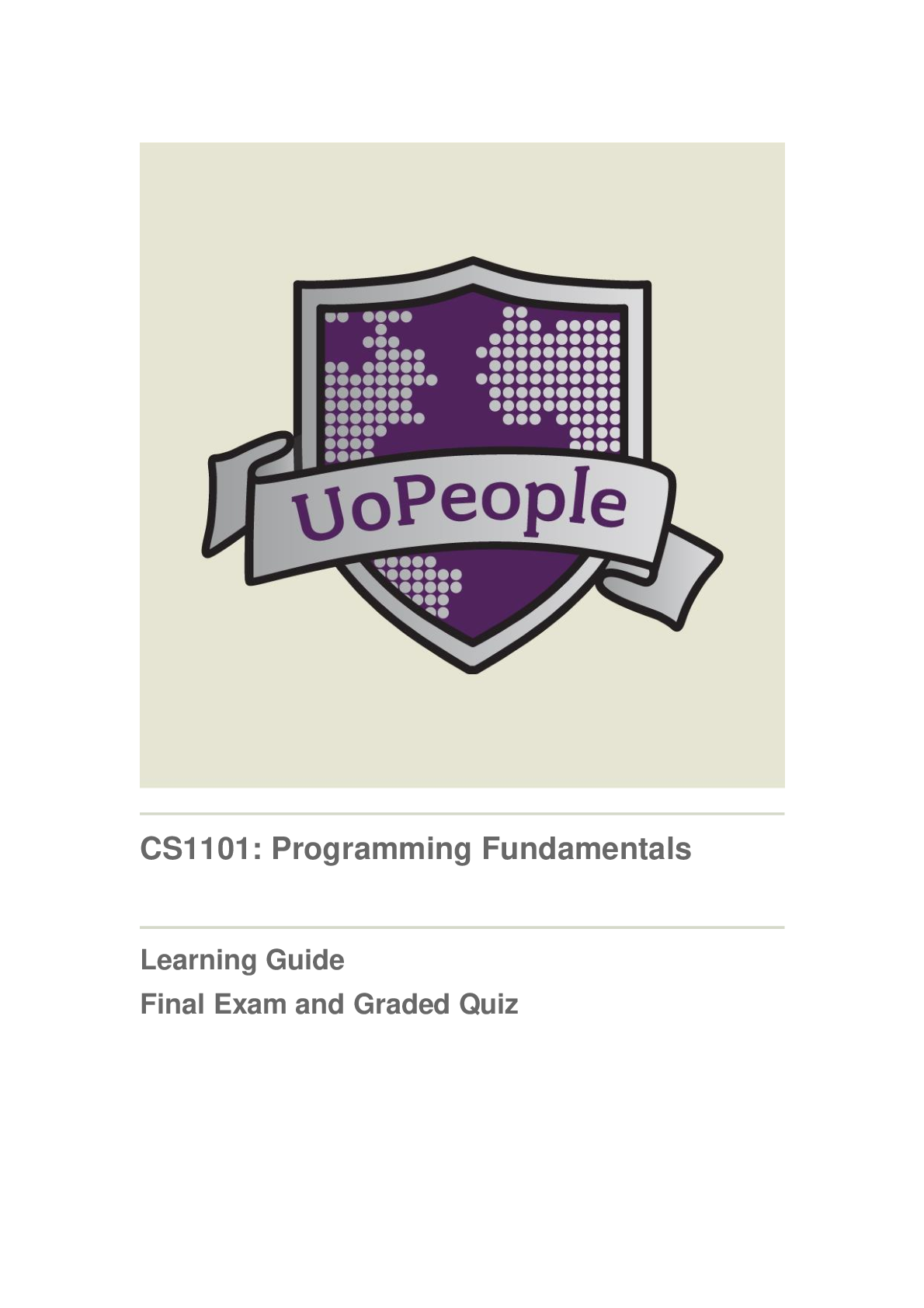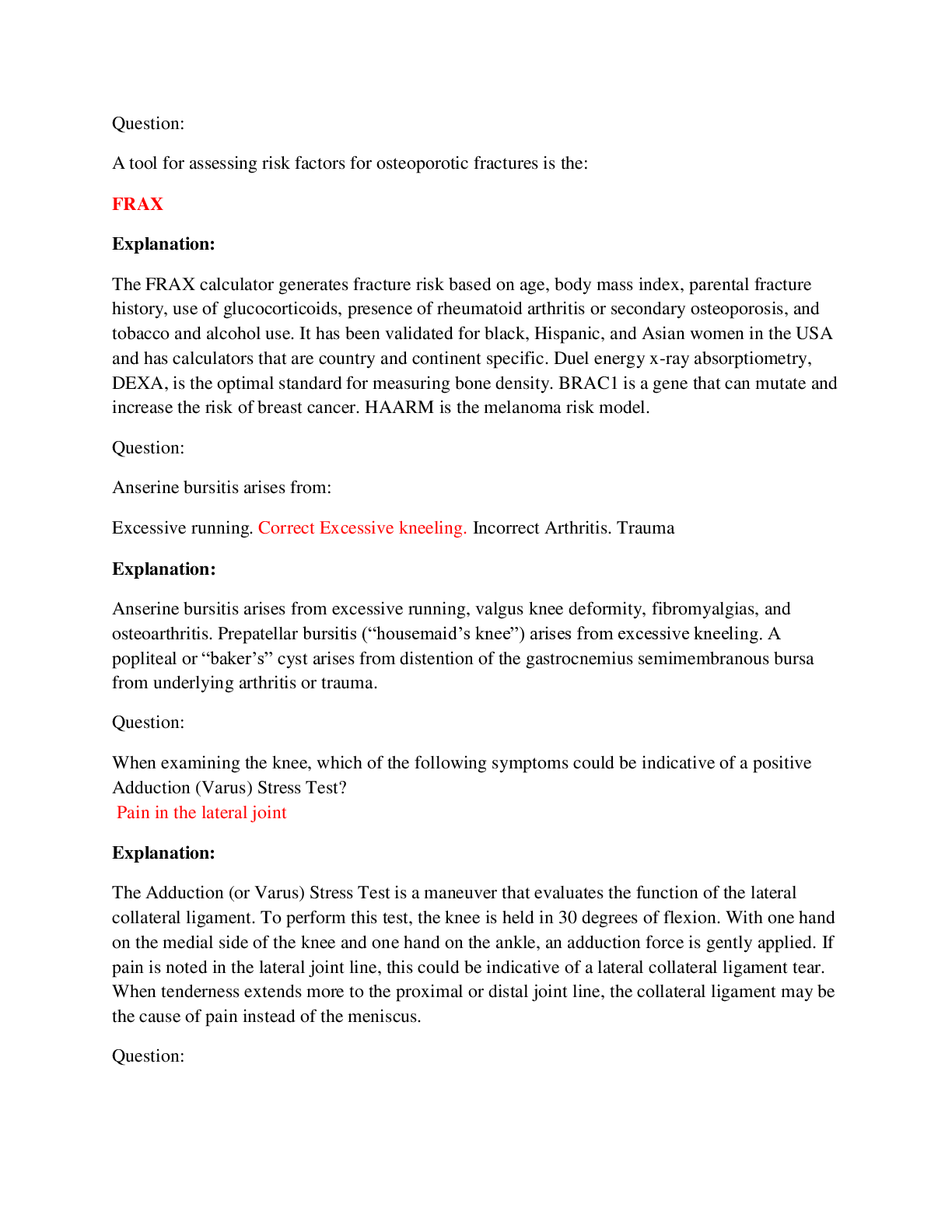Grand Canyon University/NURSING MISC/APEA QBank Ortho Qs 317 total.docx
Document Content and Description Below
Question: A tool for assessing risk factors for osteoporotic fractures is the: FRAX Explanation: The FRAX calculator generates fracture risk based on age, body mass index, parental fracture histo... ry, use of glucocorticoids, presence of rheumatoid arthritis or secondary osteoporosis, and tobacco and alcohol use. It has been validated for black, Hispanic, and Asian women in the USA and has calculators that are country and continent specific. Duel energy x-ray absorptiometry, DEXA, is the optimal standard for measuring bone density. BRAC1 is a gene that can mutate and increase the risk of breast cancer. HAARM is the melanoma risk model. Question: Anserine bursitis arises from: excessive running. Correctexcessive kneeling. Incorrectarthritis.trauma Explanation: Anserine bursitis arises from excessive running, valgus knee deformity, fibromyalgias, and osteoarthritis. Prepatellar bursitis (“housemaid’s knee”) arises from excessive kneeling. A popliteal or “baker’s” cyst arises from distention of the gastrocnemius semimembranous bursa from underlying arthritis or trauma. Question: When examining the knee, which of the following symptoms could be indicative of a positive Adduction (Varus) Stress Test? Pain in the lateral joint Explanation: The Adduction (or Varus) Stress Test is a maneuver that evaluates the function of the lateral collateral ligament. To perform this test, the knee is held in 30 degrees of flexion. With one hand on the medial side of the knee and one hand on the ankle, an adduction force is gently applied. If pain is noted in the lateral joint line, this could be indicative of a lateral collateral ligament tear. When tenderness extends more to the proximal or distal joint line, the collateral ligament may be the cause of pain instead of the meniscus. Question: When assessing the knee, the examiner instructs the patient to straighten his knee. This motion would assess knee: Extension Explanation: Having the patient straighten his leg assesses extension of the knee. The examiner instructs the patient to bend his knee. This maneuver assesses knee flexion. Internal rotation of the knee could be elicited by having the patient swing his lower leg toward the midline while sitting. Instructing the patient to swing his leg away from his midline while sitting assesses external rotation of the knee. Question: When performing an examination of a tender left finger on an adult, the surrounding tissue reveals warmth, edema, and redness. This finding could be suggestive of: gouty arthritis Explanation: Redness, warmth, and edema over a tender joint suggest septic or gouty arthritis infection, or possibly rheumatoid arthritis. Question: An example of a fibrous joint would be the: Skull Explanation: The skull is an example of the fibrous joint. Examples of synovial joints include the shoulder, knee, hip, wrist, distal radioulnar, elbow, and carpals. Vertebral bodies of the spine and the pubic symphysis of the pelvis are examples of cartilaginous joints [Show More]
Last updated: 2 years ago
Preview 1 out of 53 pages

Buy this document to get the full access instantly
Instant Download Access after purchase
Buy NowInstant download
We Accept:

Reviews( 0 )
$8.00
Can't find what you want? Try our AI powered Search
Document information
Connected school, study & course
About the document
Uploaded On
Jun 16, 2021
Number of pages
53
Written in
Additional information
This document has been written for:
Uploaded
Jun 16, 2021
Downloads
0
Views
44
















